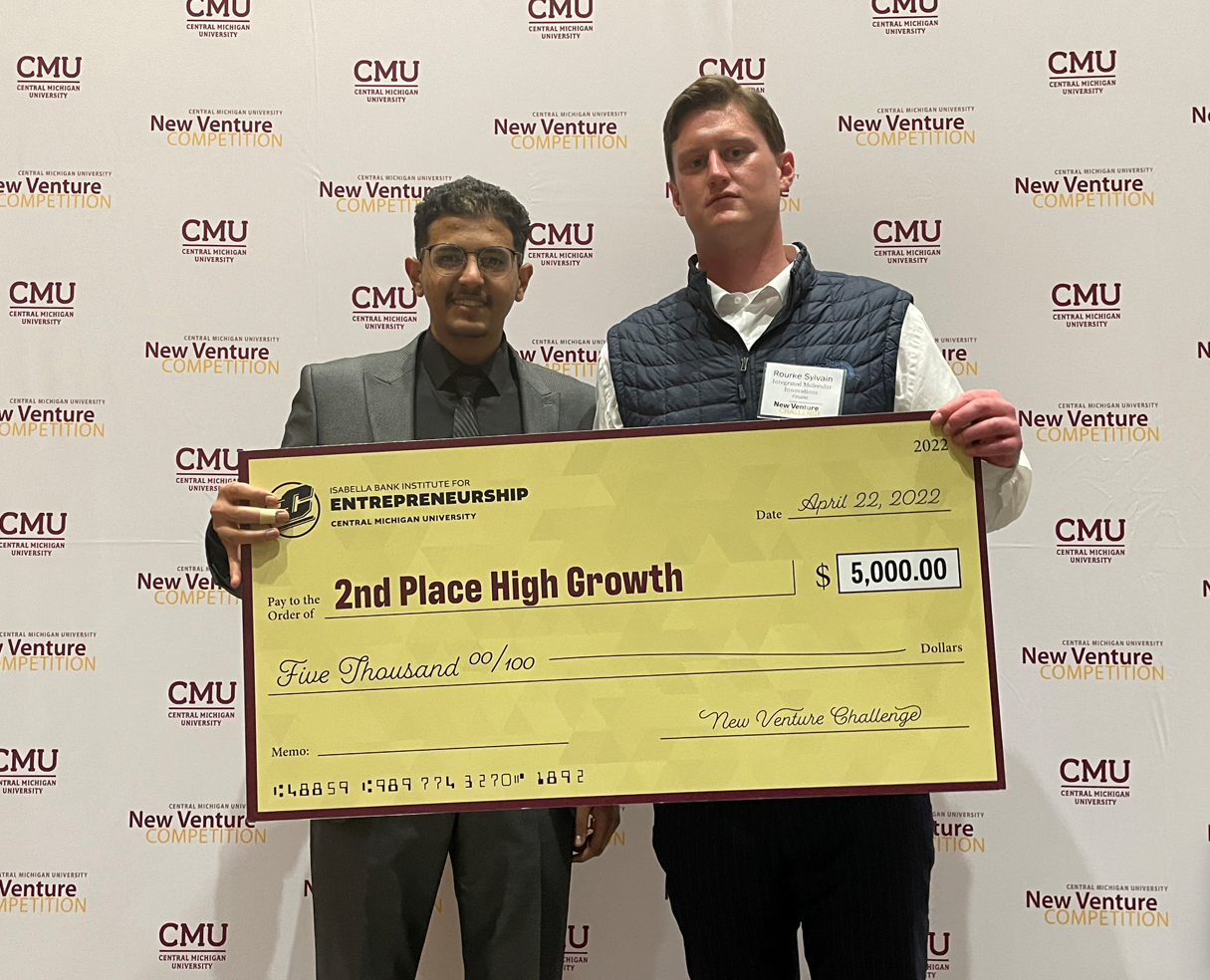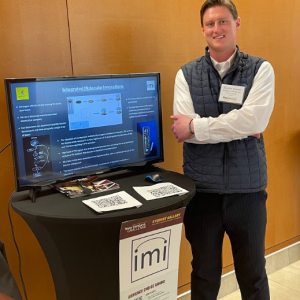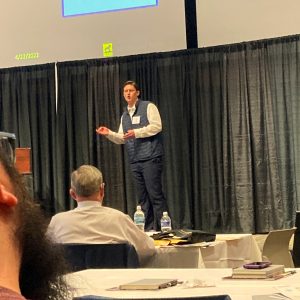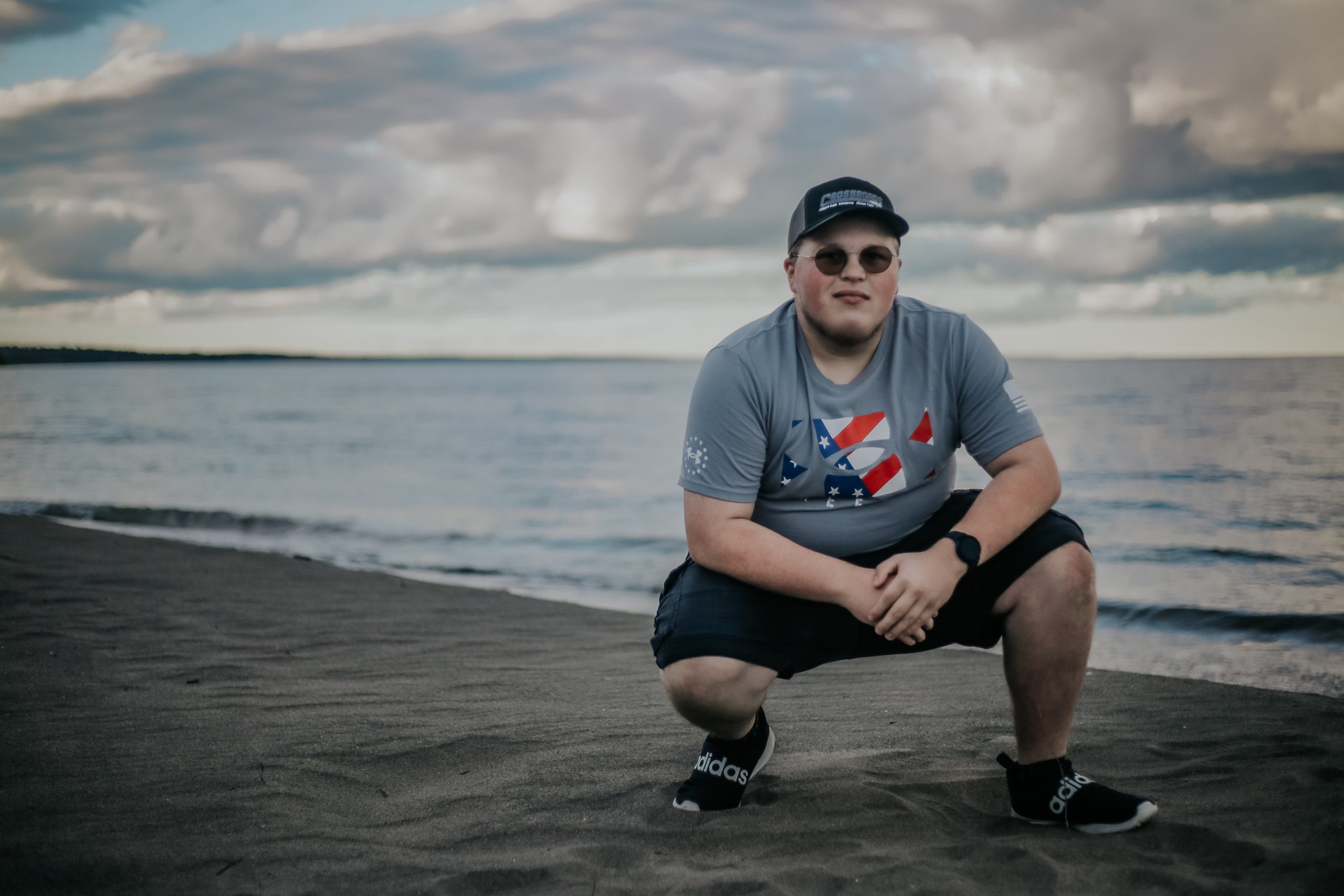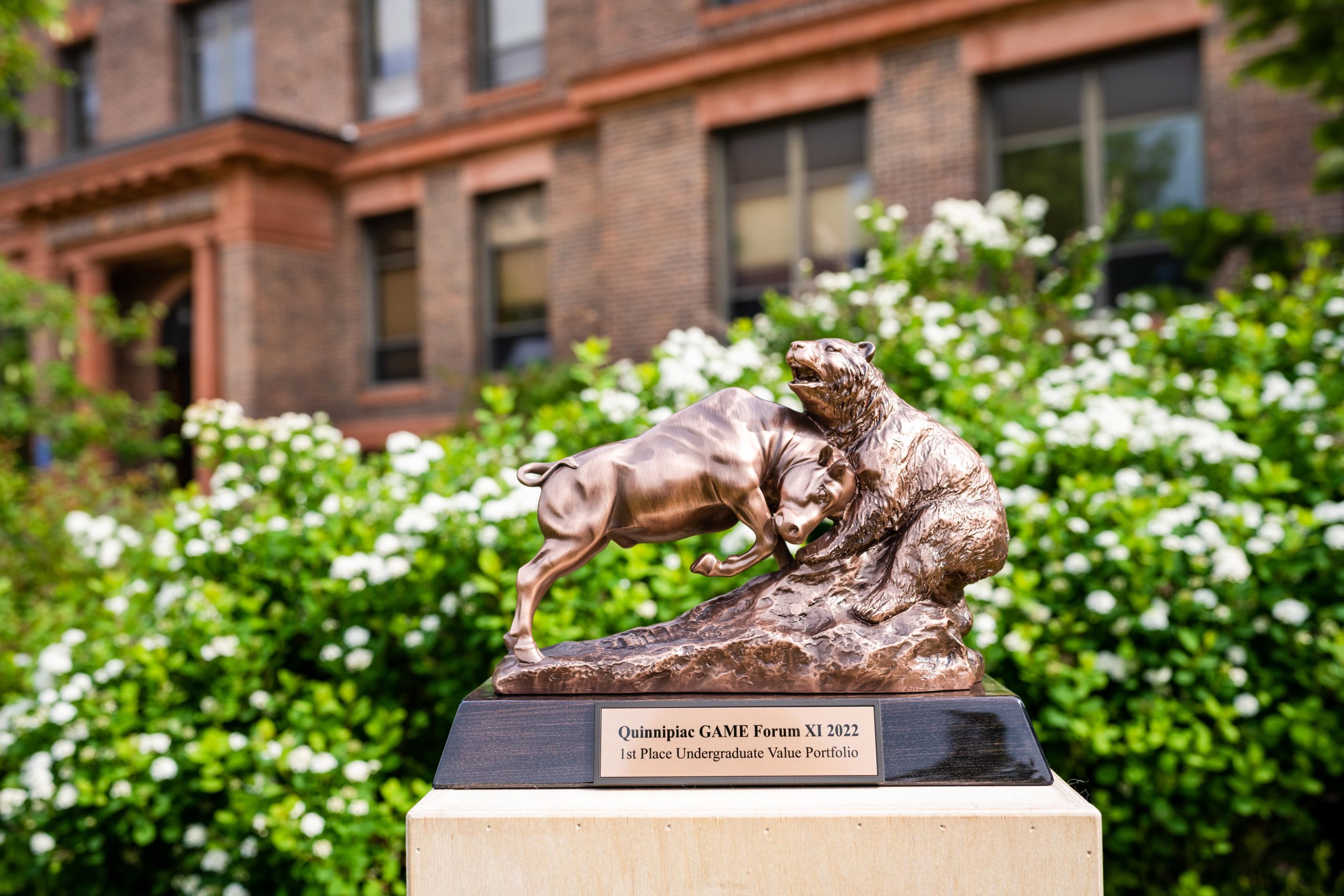
Each year the Michigan Tech College of Business recognizes faculty for their accomplishments in the areas of service and research. A faculty panel of past recipients guides the selection process. This year’s honorees are:
Jenny Apriesnig–Service
This year’s Service Award went to Jenny Apriesnig, assistant professor of economics. A faculty member in the College since 2018, Apriesnig took on the advisor role for Michigan Tech Collegiate DECA last fall. Under her leadership and mentorship, the group reactivated and saw early success. Highlights include: Six students competing and placing at the state competition in February and four students competing in the national conference in Baltimore in April, with two earning a top 10 placement.
The organization now has 13 members and is looking forward to growing.
Apriesnig’s above-and-beyond efforts were noticed by her students, too—many of whom nominated her for Tech’s student organization advisor of the year, another award she received this year. Nominees noted that she traveled with the group to various functions across the country and held one-on-one mentoring sessions to ensure each student felt prepared and supported ahead of their competitions and presentations.
Many College of Business students were active in DECA during their high school careers, and were eager to continue their endeavors during college.
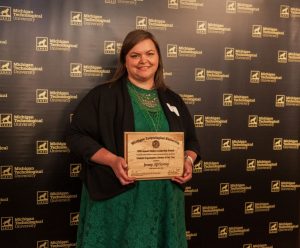
“Jenny’s dedication to support DECA students is appreciated by everyone in the College of Business; she is an outstanding role model for our students,”
William Breffle–Research
Many of Associate Professor of Economics William (Bill) Breffle’s research papers are published in top environmental economics journals, including the Journal of Environmental Economics and Management, The American Journal of Agricultural Economics, Land Economics, Ecological Economics, and Environmental and Resource Economics. Breffle has also published in policy journals such as Contemporary Economic Policy and Urban Studies. Two of Breffle’s journal articles were selected for International Library of Environmental Economics and Policy book volumes as “important and influential essays.” Another publication he co-authored is listed among the top 200 most influential research papers in the discipline of environmental and ecological economics. Impressively, according to Google Scholar, his research has been cited more than 1,500 times.

During the first half of his 30-year career, Breffle’s research centered on the valuation of economic damages caused by injuries to natural resources, such as mining injuries, releases of organics, and oil spills. Research teams across 15 states that included him secured more than $700 million in settlements for restoration and remediation. More recently, his research has investigated pressing topics related to sustainability and carrying capacity, especially focused on the Great Lakes, but also climate change issues as far away as Laos and Uganda. Blending his teaching with research, Breffle’s co-authors frequently include students.
“Dr. Breffle’s selection for the COB Faculty Research Award is a reflection of his career-long commitment to academic discovery. His research has informed policy decision-makers on national issues for more than 20 years.
“MTU students are fortunate to learn from a person who sits at the forefront of his profession,”
About the College of Business
The Michigan Tech College of Business offers undergraduate majors in accounting, business analytics, construction management, economics, engineering management, finance, management, management information systems, and marketing, as well as a general business option. Graduate degrees include the TechMBA®, a Master of Engineering Management, a Master of Science in Accounting, and a Master of Science in Applied Natural Resource Economics.
